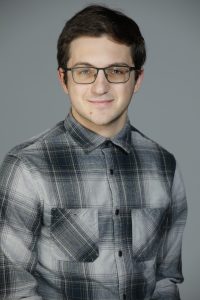 Nathaniel Karom
Nathaniel Karom
Graduate Student, Physics and Astronomy
Weiss Research Group
My first experience at Vanderbilt was as an undergraduate student through the Research Experiences for Undergraduates (REU) program. Under faculty mentorship, I was tasked with employing Density Function Theory (DFT) to investigate how atomic displacement affects the electrical properties of Gallium Oxide (Ga2O3), a wide-bandgap semiconductor with promising applications in power electronics. Through this work, I gained proficiency in advanced computational methods and developed a deep appreciation for how small atomic-level changes can significantly impact a material’s macroscopic behavior. This foundational experience not only ignited my passion for research but also shaped my approach to understanding complex material systems through computational modeling.
My research focuses on understanding the complex interactions between space radiation and optoelectronic devices – components that integrate both electrical and optical functionalities for information transmission. This work is crucial as we continue to push the boundaries of space exploration and satellite communications, where radiation exposure poses significant challenges to device reliability and performance.
Understanding the physics behind a device’s reaction to radiation involves both experimental testing and simulation. However, current simulation tools specialize in studying either electronic or photonic device physics, necessitating a unified multi-scale framework. My central project has been designing this framework by developing an interface between Synopsys RSoft, a photonics simulator, and Sentaurus TCAD, an industry-standard electronic device simulator. This integration would enable us to comprehensively model how space radiation affects both the electric and photonic functionalities of devices, providing insights that weren’t possible when using these simulation tools separately.
The Vanderbilt Institute of Nanoscale Science and Engineering (VINSE) has played a pivotal role in my development as a researcher, particularly through its annual NanoDay forums. These events have become highlights of my graduate career, offering more than just opportunities to present my research. They serve as a vibrant showcase of VINSE’s collaborative and interdisciplinary spirit.
Walking through NanoDay poster sessions, moving from presentations on advanced chemistry to nanoelectronics research, I’m consistently reminded of the remarkable breadth and depth of our research community. These interactions have enhanced my appreciation for interdisciplinary collaboration and have often sparked unexpected insights that influence my own research approach.